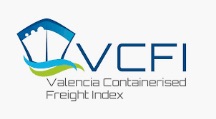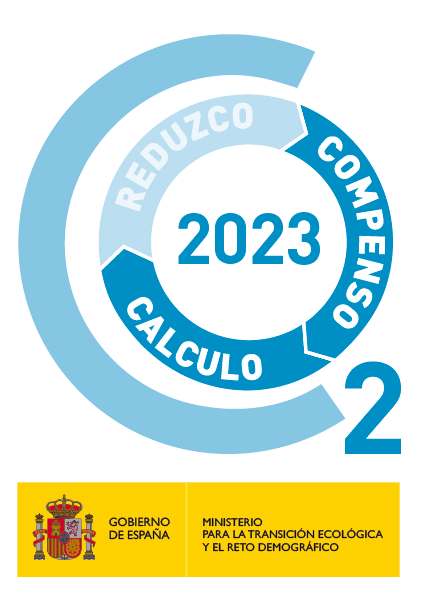The VCFI is the index created by the Port Authority of Valencia to reflect the evolution of the market rates for the export of full containers by sea from Valenciaport. VCFI stands for Valencia Containerised Freight Index. This index will serve shippers as a tool to predict the evolution of freight rates within their markets of interest, which is a key determinant of the cost of their export operations. On the other hand, it will also be useful for operators that offer such services, providing a benchmark for the evolution of their own freight rates and those on the market.
VCFI General
VCFI October 2025
In October 2025, the Valencia Containerised Freight Index (VCFI) recorded a decline of 3.28%, standing at 2,108.76 points. With this monthly adjustment, the index has accumulated an increase of 110.88% since the series began in 2018. Performance varied by area: the Western Mediterranean fell by 3.48% to 2,580.26 points, maintaining cumulative growth of 158.03%; while the Far East rebounded strongly by 13.84% to 2,088.77 points, with a cumulative increase of 108.88%.This performance is part of an international environment still characterised by volatility in container shipping. According to the consulting firm Drewry, the World Container Index (WCI) experienced a gradual recovery throughout October, after standing at around USD 1,669 per 40-foot container at the beginning of the month and closing the last week at approximately USD 1,822, reflecting adjustments in supply and demand for capacity.
At the same time, the Shanghai Containerised Freight Index (SCFI) closed October at 1,550.70 points, confirming that Asian routes showed some recovery from the lows of previous months. More broadly, according to the latest update from international reference bodies, the global economic situation continues to be marked by moderate and uneven growth in international trade. In line with this, according to the World Trade Organisation (WTO), the volume of merchandise trade increased by 4.9% year-on-year in the first half of 2025, driven by strong demand for technological products and a rebound in South-South trade between developing economies. However, the WTO forecasts that global trade growth will moderate to 2.4% for the year as a whole, with weaker expansion in 2026 (+0.5%) due to cooling economic activity and uncertainty stemming from US trade policies.
Along the same lines, UNCTAD highlights that, although global trade has remained stable in terms of value, geopolitical tensions, high logistics costs and a slowdown in manufacturing trade persist, factors that limit the sustained recovery of trade in goods. In this context, and specifically with regard to maritime transport demand, the RWI/ISL Container Throughput Index — a leading indicator of global trade based on container movements in 90 international ports — fell slightly in the latest reading for September to 136.7 points (seasonally adjusted), from 137.3 the previous month. According to the German institute RWI–Leibniz and the ISL, this slight decline was moderated by the strong increase in port traffic in China, whose sub-index rose from 151.7 to 153.3 points. Without this improvement, the overall decline would have been more pronounced.
In contrast, the North Range Index, which reflects activity in the main ports of northern Europe, fell again to 115.3 points, anticipating a slowdown in demand in the euro area and in intra-European trade. On the supply side, Alphaliner data point to a further increase in ‘inactive’ tonnage during October. Coinciding with China’s Golden Week, numerous shipping companies and shipowners took advantage of the temporary reduction in activity to send ships to shipyards or carry out maintenance and retrofitting work. As of 20 October, 183 vessels (815,000 TEU) were out of service for shipyard work, 30 units and 127,000 TEU more than in the previous report. If we add the vessels out of service for commercial reasons, the total inactive fleet reached 3.4% of the world total, the highest level since the end of 2023. This increase in ‘in yard’ tonnage is precisely a response to the structural excess capacity that persists in the market, as shipping companies take advantage of periods of lower demand to temporarily withdraw vessels and contribute to the balance between supply and demand. Overall, the evolution of the VCFI in October reflects a global maritime market in the process of adjustment, where the slight improvement in some international indicators coexists with still weak global demand and oversupply.
The partial recovery of freight rates on certain routes, such as the Far East, seems to be more a response to temporary capacity adjustments than to a sustained revival in trade. In the short term, the evolution of maritime transport will continue to be closely linked to the dynamics of world trade and the sector’s ability to balance the available fleet with still moderate cargo volumes, in a global economic environment that is uncertain and sensitive to geopolitical and trade changes.
VCFI Participating Companies

















